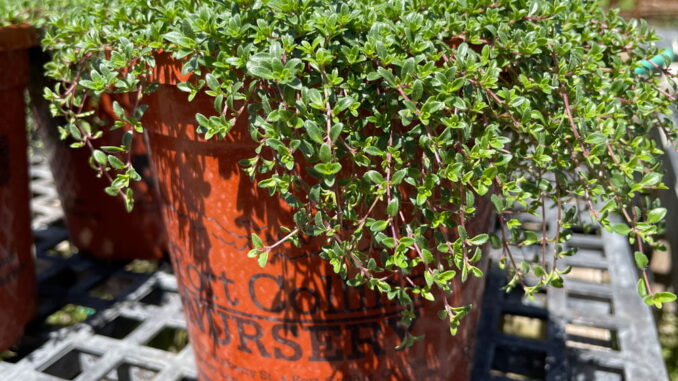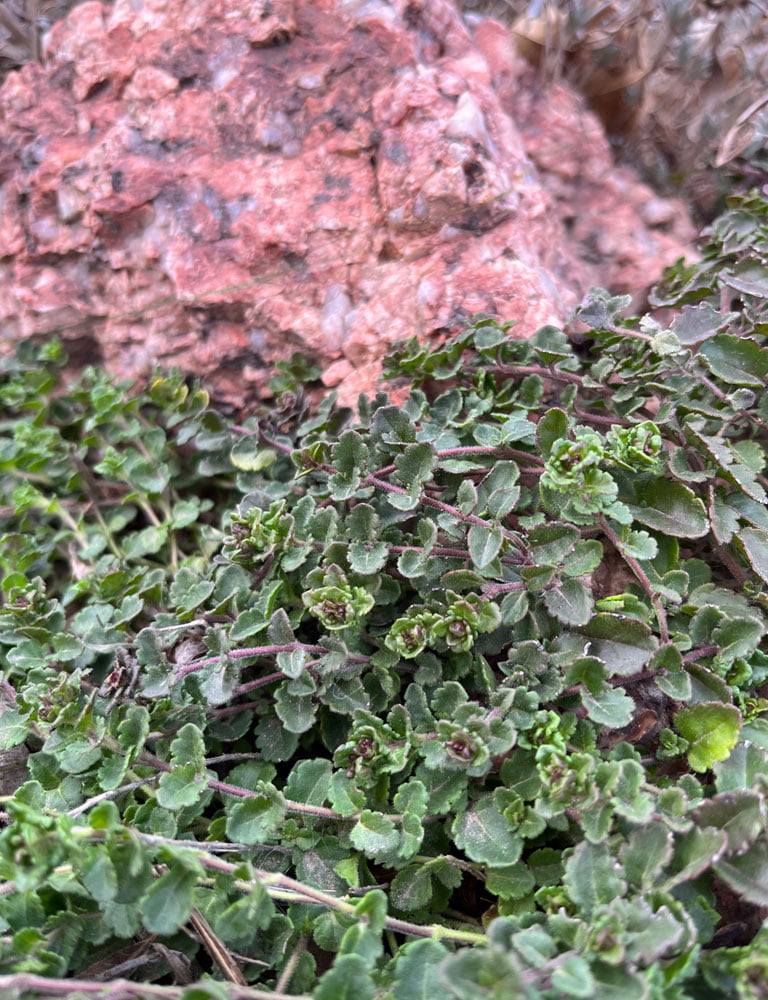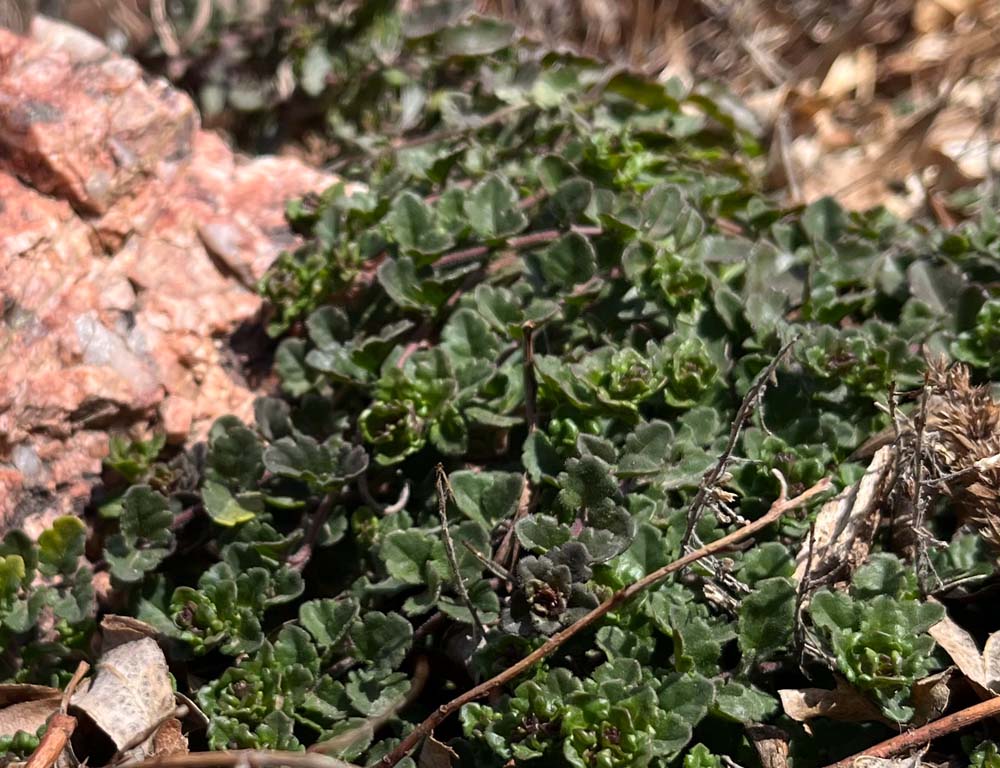

by Fort Collins Nursery
Groundcovers are a useful and effective tool in your gardening arsenal for a myriad of reasons. They make planting beds look complete and ensure there is always something blooming. They suppress obnoxious weeds, cover bare ground to help reduce erosion, and evergreen options give your garden life even during the winter months.
Depending on the type of ground cover you choose; it may take quite a few to fill in an area. If buying larger mature specimens, dividing the plants into thirds or quarters can help lower the cost. While this isn’t possible with all groundcovers, it works wonderfully with veronica, thyme, and moneywort. To be successfully divided, the plants need to be well rooted in their containers so that each section that is separated has plenty of roots. They can be separated with a trowel or serrated bread knife.

Evergreen plants are important in the landscape, but they are hard to fully appreciate until winter comes around. Then, it’s quite apparent how empty and bleak it feels without them. One of these evergreen groundcovers that provide year-round color is Angelina sedum. It’s sought after because of its fluctuating color-changing abilities throughout the seasons. During cold winter months, the pointy succulent leaves are an array of fiery oranges and reds, creating a welcome sight when they push through the snow. During the summer, they are chartreuse, green, and yellow, adding a verdant hue to otherwise empty spaces.
Tidal Pool Veronica is also an evergreen perennial with serrated, fuzzy green leaves that covers the ground and cascades over rocks. Tiny blue flowers appear in early summer almost completely enveloping the plant. These evergreen groundcovers are commonly underplanted with flowering bulbs like tulips, crocus and daffodils. This creates a miniature meadow-like appearance with the cheery bulbs pushing up through the green in spring.

Over time, some groundcovers like ice plants, thyme, moneywort, or veronica tend to die out in spots. This occurs most often if there has been a harsh, dry winter or if they sat under dense snow for a long period of time. In spring, when the plant wakes up, you can see where it has died out and clear out the dead and brown stems. Replant in these empty spots with the same plant; starter sizes or 4-packs are perfect for filling these holes.
It’s tempting to plant groundcovers under trees to suppress weeds and to fill bare soil. While this is doable, keep in mind that little groundcover plants will usually lose out on water because the tree has a more expansive root system. For these dry shade situations, it’s best to pick low-water options like lamium, Sweet Woodruff, and vinca.
If you’re ready to elevate your garden, extend bloom seasons, and save time that would be spent on weeding, explore groundcovers. More green plant material means less room for weeds to take over! So grab your drink of choice, head out into your yard, and see where groundcovers can be put to use. After all, we all want an excuse to install a few more plants in, right?
Support Northern Colorado Journalism
Show your support for North Forty News by helping us produce more content. It's a kind and simple gesture that will help us continue to bring more content to you.
BONUS - Donors get a link in their receipt to sign up for our once-per-week instant text messaging alert. Get your e-copy of North Forty News the moment it is released!
Click to Donate
